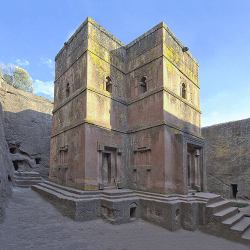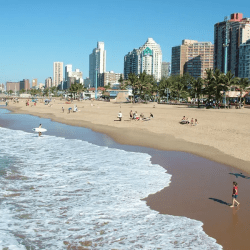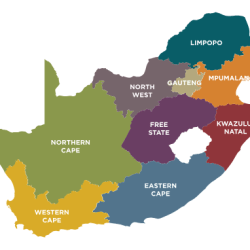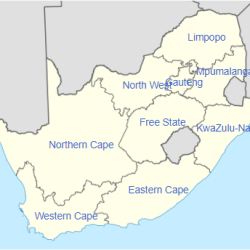
Ezemvelo KZN Wildlife’s (Ezemvelo) mandate is derived from the KwaZulu-Natal Nature Conservation Management Act (Act No.9 of 1997), which is to direct the management of nature conservation within the Province including protected areas (PAs). This includes the development and promotion of ecotourism facilities within the PAs.
With its headquarters at Queen Elizabeth Park in Pietermaritzburg, the provincial capital, Ezemvelo manages more than 120 protected areas and is the leader in sustainable biodiversity conservation. It has recently broadened its focus to become more relevant to communities living adjacent to their parks – primarily through job creation and sustainable natural resource harvesting.
Ezemvelo KZN Wildlife – is entrusted with the long-term conservation of the regions rich biodiversity for the people of South Africa. In more than 100 years of formal conservation in the province of KwaZulu-Natal, the various departments and statutory organisations that evolved into today`s KZN Wildlife have received many formal awards and words of praise for the quality of their service to conservation and for the high standard of management of the province’s natural resources.
EWorld Class Resorts and Accommodation – Ezemvelo KZN Wildlife Resorts invites people to enjoy the ultimate wildlife experience at world class resorts. From the heights of the Maloti- Drakensberg Park World Heritage Site, through the tropical savannahs of Zululand where the Big 5 inhabit Hluhluwe Imfolozi Park, and on to the brilliant coral reefs of the Indian Ocean that fringe the lakes and wetlands of the iSimangaliso Wetland Park World Heritage Site.
History
Ezemvelo KZN Wildlife is the provincial agency mandated to carry out biodiversity conservation and associated activities in the province of KwaZulu-Natal in the Republic of South Africa. The primary focus of the organisation is biodiversity conservation – the management of more than 120 protected areas which include two World Heritage Sites which are the Maloti-Drakensberg Park World Heritage Site and the Isimangaliso Wetland Park World Heritage Site. The organization also applies provincial nature conservation legislation and its associated regulations. A secondary but nevertheless vital aspect, is the management of one of the largest eco-tourism operation in South Africa. The Ezemvelo KZN Wildlife administration model has been shown to work well whereby the eco-tourism operations provide financial support for conservation operations. These two key elements are backed by various support services divisions which include audit, finance,human resources,projects and IT, amongst others.
The organisation as a whole is the off-spring of a merger between two conservation bodies: the former Natal Parks Board which was formed in 1947 and whose antecedents go back into colonial times; and the former KwaZulu Directorate of Nature Conservation which was formed in 1972 to manage the nature conservation requirements of the “homeland” of KwaZulu. Following the democratic elections in 1994 both organisations negotiated a mutual amalgamation which resulted in the formation of the KwaZulu-Natal Nature Conservation Board with its entire operation conducted as KwaZulu-Natal Conservation Services. al body being Ezemvelo KZN Wildlife. Although the core function is biodiversity conservation, the organization has two other “legs” – these being Commercial Operations and Partnerships. The model on which Ezemvelo KZN Wildlife operates is designed to make the organisation as independent as possible. Although it is a parastatal body receiving a subsidy from the provincial government, it is able to supplement this through its own business operations, generating some 40% of its operating budget. In terms of local economy it has been established that in many instances Ezemvelo is the only employer in certain areas and one salary paid to an employee from a local community can affect between ten and 15 others in a ripple-effect. In this way the organization affects more than 30 000 people in rural areas in a positive economic way.
Biodiversity Conservation
A biodiversity-conservation body should run game reserves, say many people. This is indeed what we do – and more. We are the custodians of the Maloti-Drakensberg Park World Heritage Site, we are the conservation and ecotourism managers in the iSimangaliso Wetland Park, we manage the world famous Hluhluwe-Imfolozi Park genetic home to the southern white rhino and its fantastic story of recovery; we manage Ithala Game Reserve, Weenen Game Reserve and a host of delightful and vital smaller parks and nature reserves. Our District Conservation Officers work amongst communities outside of protected areas ensuring that the conservation legislation of the province is applied and to assist the public with any biodiversity conservation issues they might encounter. Our marine officers act as agents for Marine and Coastal Management, a branch of the national Department of Environment Affairs and apply appropriate marine legislation to protect our dwindling marine resources.
No biodiversity agency can operate without scientific input and Ezemvelo is no exception. Teams of ecologists, both in the protected areas and in regional offices, and our head office, are responsible for providing a scientific basis for management operations through applied research, for applying the requirements of national legislation regarding Environmental Impact Assessments, Integrated Management Plans and much more.
Biodiversity conservation includes conservation of the air we breathe and the water we drink. All life on this planet relies on these two elements. Without either there can be no life. It is thus a vital role of any conservation agency to draw the attention of the people of the world to the need for measures to protect both air and water. At present man is responsible for massive air and water pollution. Proper biodiversity conservation ensures that ecosystems goods and services are available to mankind. These include water, fuel, natural resources for creating housing, household goods and clothing, food and traditional medicines. In KZN alone such natural goods and services are valued at about R151 million. It is estimated that 6 million people in this province alone use traditional remedies – a trade worth R350 million annually and rising. A huge amount of raw material for the creation of natural remedies also makes its way from KZN to the markets in Gauteng and other parts of the country. The value of these natural goods and services pose the question of potential cost to government to replace them should they fail. What would the cost to the State be to provide piped water, reticulated sewerage, housing built of commercially available material, provision of fuel such as paraffin or the provision of electricity to rural areas? To manage and protect this vast natural investment Ezemvelo KZN Wildlife receives a subsidy of R350 million per annum.
Biodiversity conservation also provides the attraction of protected natural areas that draw tourists not only locally but from all over the world. The vast majority of tourists to South Africa are drawn by the allure of the game reserves – but they also pay for accommodation and service en route. In this way the effect of our game reserves is spread throughout the country
Eco – Tourism
Ezemvelo manages one of the largest eco-tourism operations in South Africa. We offer 2 500 beds per night in a wide range of different accommodation types, and we offer camping accommodation to over 10 000 people per night. Diversity is a key word in describing our operations – be it conservation or eco-tourism. Our overnight visitor facilities range from a cave in the Maloti-DrakensbergPark through open campsites, self catering rondavels, chalets, safari tents, to cottages and luxury lodges. Certain of the larger resorts – Didima, Giant’s Castle and Hilltop in the Hluhluwe-Imfolozi Park and Ntshondwe in Ithala Game Reserve also offer a restaurant. This diversity offers something to suit all pockets.
Depending on the sort of wildlife experience our visitors want they can choose from a variety of facilities in one of the 65 protected areas that offer overnight accommodation. Not all of our more than 120 protected areas offer accommodation as some are quite small. Ezemvelo KZN Wildlife offers many unique and wonderful experiences for its visitors – these include guided walks, overnight Wilderness Trails in Imfolozi, access to ancient San rock-art, close-up encounters with crocodiles at the St Lucia Crocodile Centre, peace and solitude in the Drakensberg, unparalleled scenery and vistas and superb game viewing from the comfort of your own car or in a guided open vehicle tour.
Partnerships
We have dedicated Community Conservation Officers and their staff who work amongst rural communities assisting and teaching good biodiversity conservation practice and a lot more. A levy on each tourist paying to enter a protected area provides funding for community projects which are financed through the carefully administered Community Levy Fund. An active Projects Section negotiates funding from major national and international sources. This too is tightly managed. An exciting new initiative is the Ezemvelo KZN Wildlife Biodiversity Stewardship programme in which we enter into partnerships with private landowners in order to protect valuable biodiversity assets that occur on that private land. To date five new nature reserves have been created under the Stewardship Programme. Another active partnership programme is the WWF Black Rhino Range Expansion Project which seeks to spread the endangered black rhino to selected groupings of appropriate private land in KZN. To date five conservancies of about 20 000ha have been formed and have been stocked with founder populations of this iconic animal.
Protected Areas
For administrative reasons Ezemvelo KZN Wildlife recognizes two regions – these being the West and East Regions.
West Region
The core of this region is the 260 000ha Maloti-Drakensberg Park World Heritage Site. This is one of 27 World Heritage Sites to be inscribed for both natural and cultural attributes. The natural aspect recognizes the outstanding scenic beauty of the Park, a unique aspect being that it is a scarp range. The cultural aspect recognizes the unique San rock-art which is such a feature of the Park which is in effect a massive outdoor art gallery housing some 40 000 rock-art images in an estimated 600 different sites. One of these is the Game Passs helter near Kamberg which is recognized as the “Rosetta Stone” of San rock-art in that it holds the key to interpreting the meaning of much rock-art symbolism. The Park is one of the major water-producing areas of South Africa with rivers rising within its boundaries feeding all the major urban and rural areas of KZN. In addition, through the Tugela-Vaal System, water from the Drakensberg is diverted to Gauteng. 12 different game of nature reserves and State Forest areas were amalgamated into the Park which now forms a continuous and rich mosaic of protected areas. A great many small nature reserves lie within this region, all of which hold some unique attraction for the visitor.
EAST Region
Zululand traditionally is big game Country and this region holds the famous Hluhluwe-iMfolozi Park– genetic home of every white rhino population in the world, Ndumo Game Reserve, Tembe Elephant Park(currently home to an elephant with the largest tusks in South Africa) and diverse Ithala Game Reserve. Many other smaller protected areas can be found within this region.
Coastal Region
The gem in this region is the iSimangaliso Wetland Park World Heritage Site. This park is managed by the Wetland Authority but Ezemvelo manages the ecotourism operations as well as biodiversity conservation on an agency basis within the Park. Other protected areas falling within this region are (amongst others) the Umlalazi Nature Reserve at Mtunzini, the Beachwood Mangrove and Stainbank Nature Reserves in Durban as well as Mpenjati and Oribi Gorge Nature Reserves to the south of Durban.
A visit to the Ezemvelo website confirms that Ezemvelo is an extremely multi-facetted and diverse organization just as the protected areas and the various species in them are diverse. The various protected areas in the KZN parks system are well worth a visit and it is seemly to keep in mind the hidden benefits of maintaining these parks for the benefit of the present and future generations
Reference
http://www.kznwildlife.com/about.html#description







